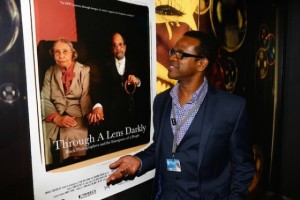At the latest Media Impact Funders (MIF) event, “Remaking Public Media,” the short- and long-term impact of public media was never far from the discussion. Synergy between legacy and social media was a mantra.
Documentary photography is being leveraged successfully for social change, in projects funded by The Open Society Institute’s Documentary Photography Project. “Photography should give people agency” in a world where it too often objectifies, alienates and stereotypes, said project director Amy Yenkin. One good example: Everyday Africa, where both professional and amateur photographers post photos of ordinary people in their daily lives on the African continent—getting beyond the coups-terror-and-misery stuff of headline journalism. The Instagram pictures have been used by, among others, The New York Times, Newsweek, and National Geographic. They’ve been woven into curricula and the project has inspired “everyday” Instagram sites everywhere from the Bronx to Mexico and Iran. Another example is the Digital Diaspora project, which on the way to being a film has also been an opportunity for African Americans in communities across the country to get together and tell stories built out of their own family albums.
Video and Games
How effective can video be? Sometimes, it’s a home run: “Invisible War,” top winner of the Media Impact Funders’ annual festival, not only changed national policy but is also being used in training on military bases. But rarely do you get such decisive evidence, many agreed; sometimes you’re enriching a national conversation in ways that can be difficult to capture. But the plus of having humor on your side was evident in a clip from StandUp Planet.
What about games? Robert Torres of the Gates Foundation showed that there’s plenty of good evidence of the effectiveness of games for learning. NPR’s Matt Thompson (the brilliant guy behind Code Switch), acting as moderator, called for entertainment and education to get together. But Alan Gershenfeld, head of edugames company E-Line Media, cautioned against oversimplifying that insight. He made the point that well-designed educational games, which closely fit the curricular needs of K-12, rarely make good consumer games. Any well-designed educational game (which gets that way by a lot of iteration and good feedback) should be compelling, though.
Music and Journalism
Music can connect people to communities in which they can encounter journalism they care about, explained Mike Henry of Paragon Media Strategies. And radio is where people like to discover music, he said; more than half of teens depend on it for that purpose. The company is working with public radio stations on formats that weave musical discovery and other programming. And of course, impact multiplies with social media connections to the programming.
Storytelling journalism can change policy as well as bring public understanding. The investigative news service I-News and Rocky Mountain PBS have teamed up to not only do tough stories about Colorado—exposing scandal and corruption—but see their effect in policy changes. Kaiser Health News, distributed widely through other outlets as well as on its own site, has changed the insurance industry through investigative work. The Center for Public Integrity’s projects also have powerful, documented follow-on effects; a study of denial of medical benefits to miners with black lung restored healthcare to thousands of miners.
Read more about MIF’s “Remaking Public Media” here.

